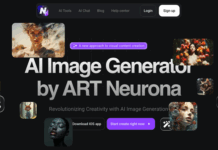
Voice bots have become a frontline fixture in customer service—handling everything from account inquiries to appointment scheduling, order tracking, and beyond. They’re fast, scalable, and (when working well) impressively efficient. But as businesses lean harder into automation, a familiar tension has surfaced: reliability.
What happens when a voice bot misunderstands a request, drops a session, or loops a caller back to the main menu? Or worse, what if the bot performs flawlessly in one channel (say, IVR), but stumbles in another, like a mobile app voice assistant?
Delivering a consistent, dependable voice bot experience across channels requires more than strong NLP models or well-scripted dialogs. It demands deep visibility into system behavior, user interactions, and the many microservices supporting each exchange. This is where observability—specifically AI-powered observability—can make a measurable difference.
Where Voice Bots Can Break Down
To the customer, a voice bot reliability is just another way to get things done. But behind the scenes, it’s a tightly orchestrated system. There’s the speech recognition engine, the natural language understanding (NLU) layer, business logic, API integrations, routing frameworks, and real-time audio handling—all stitched together across cloud or hybrid environments.
When something fails—be it a delayed API response, a dropped audio stream, or a misinterpreted intent—the failure rarely announces itself in a clear way. Users don’t describe issues in logs. They hang up. They get frustrated. They call back demanding a human.
It’s this silent degradation—the kind that doesn’t raise alerts but still damages trust—that observability aims to surface.
The Challenge of Multichannel Consistency
Voice bots today don’t live in a single channel. Customers might start a query in an IVR, continue it through a mobile app, and finish it in a smart speaker or web assistant. Each channel introduces subtle differences: in audio quality, latency, authentication steps, or even the user’s expectations.
That makes consistency difficult. A bot that handles a query well in a low-noise IVR environment might falter on a mobile app where background noise interferes with transcription. Or, the NLU model might behave differently when fed through different front-end integrations.
Without a way to trace and compare these interactions holistically, teams are left guessing at what went wrong—and where to start looking.
What Observability Brings to the Table
Unlike traditional monitoring, which focuses on metrics and uptime, observability is about understanding internal states through the outputs they generate. In the context of voice bots, this means capturing and analyzing everything from system logs and latency trends to user utterance patterns, intent confidence scores, and error traces across integrations.
By applying AI observability, organizations can correlate voice bot reliability behavior with back-end system performance, user context, and channel-specific characteristics. For instance, if a spike in failed intents coincides with slower API responses in a certain geography, the system can flag that—not just as a performance issue, but as a potential customer experience degradation.
This doesn’t just help support teams resolve issues faster. It gives product teams insights to improve training data, fine-tune dialog flows, and prioritize fixes based on real-world impact.
Beyond Reactive: Predicting Failures Before They Surface
One of the advantages of combining observability with AI is the shift from reactive troubleshooting to proactive improvement. Over time, the system learns what “normal” looks like—both in terms of technical performance and user engagement.
When something deviates—say, an unexpected increase in escalation rates from a specific user segment—the observability layer can trigger alerts before the issue becomes widespread. Maybe it’s a regression in the speech model. Maybe a recent backend update is slowing down critical responses. The key is catching it early, and with context.
Cross-Functional Benefits: IT, CX, and Product Working Together
A well-instrumented observability layer doesn’t just benefit engineering. It gives everyone—from IT ops to customer experience leads and product owners—a shared language to discuss system health and customer friction points.
Support teams can resolve tickets faster. CX teams can identify where users get stuck. Developers get the information they need to reproduce and fix issues. And business leaders get the assurance that voice automation isn’t a black box—it’s a transparent, measurable part of the service ecosystem.
Designing for Continuous Improvement
Voice bots aren’t set-and-forget tools. They live and evolve with the business. New use cases, updated integrations, and seasonal spikes in demand all put pressure on performance. Without observability, teams are flying blind, relying on limited logs or anecdotal feedback.
With observability in place, each interaction becomes a learning opportunity. Misunderstood phrases feed model training. Slowdowns inform infrastructure optimization. Abandoned sessions point to flow design gaps.
In this way, observability acts not just as a safety net—but as a feedback loop for growth.
Conclusion: Reliability Begins with Visibility
Voice bots have the potential to transform customer engagement, but only if they work as expected—every time, on every channel. Ensuring that level of voice bot reliability takes more than robust models or polished scripts. It requires a clear, continuous understanding of how these systems behave under pressure, across environments, and in real-world conditions.
That’s what observability delivers. Not just data—but clarity. Not just alerts—but actionable insight. It’s how organizations move beyond troubleshooting and into true optimization—where every call, every command, and every conversation builds trust.
Find a Home-Based Business to Start-Up >>> Hundreds of Business Listings.














































